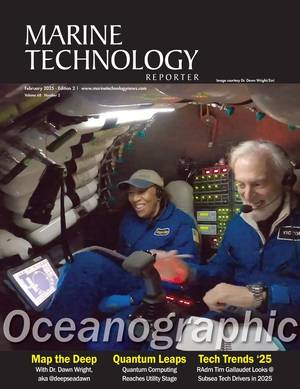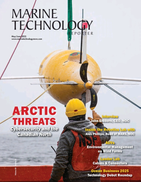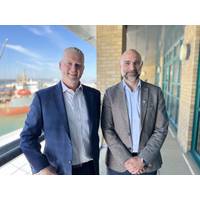
John Siddorn, CEO, National Oceanography Center
to satellite-linked gliders, from autonomous platforms to full-scale research ships, NOC delivers the data and insights that shape ocean policy, climate adaptation, and sustainable marine development.The Backbone of Ocean IntelligenceNOC operates two major research vessels, the RRS Discovery and RRS James Cook, both central to the UK’s national marine science infrastructure. These vessels are not just floating laboratories — they are foundational tools for understanding everything from volcanic seabed activity to carbon cycling in the open ocean.“Our ships are capital-intensive, but
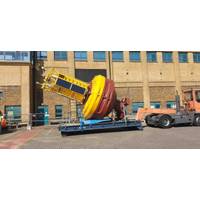
NOC Expedition Marks 40 Years of Abyssal Science Project
A scientific expedition led by the UK’s National Oceanography Centre (NOC) will mark four decades of cutting-edge science at one of the world’s deep ocean scientific research sites this summer.Setting sail today (May 30), from Southampton, onboard the Royal Research Ship (RRS) James Cook, this intensive, 25-day expedition will focus on the Porcupine Abyssal Plain Sustained Observatory (PAP-SO), 800 km from Land’s End in the Northeast Atlantic Ocean.Started in 1985, at 4,850 m depth, it is the world’s longest running time series of life on an abyssal plain-–areas
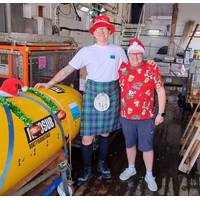
Christmas @ Sea: “Seas and Greetings” from NOC
Centre’s (NOC’s) research vessels, based in Southampton, have given a glimpse into the holiday season out on the ocean waves, including Christmas carols and – if one captain has his way – watching Frozen.Both research ships that the center operates, the Royal Research Ship (RRS) James Cook and RRS Discovery, are out in the Atlantic Ocean over this Christmas period, delivering or traveling between science missions.But being far from home, family and friends is not hampering the holiday spirit – and even NOC’s underwater robot Autosub Long Range, aka Boaty McBoatface, is
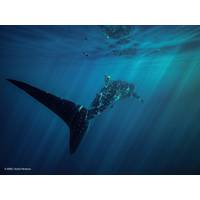
Whale Sharks Beware!
, and reduced breeding opportunities as where mature adults mate or females give birth is not yet known.”The research was led by the Marine Biological Association, Plymouth, and the University of Southampton and included international and Australian co-authors. Australian co authors came from James Cook University, Biopixel Oceans Foundation, The University of Queensland, Murdoch University, The University of Western Australia, ECOCEAN, University of the Sunshine Coast, Sundive Research, and Australian National University
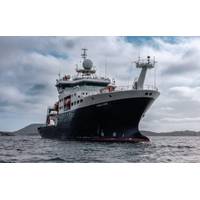
Navigating a Safe Future for Us and Our Marine Environment
UK net zero goals. It’s a tough challenge but one that we’re keen to tackle.In collaboration with the UK’s Natural Environment Research Council (NERC), we’ve been conducting trials of hydrotreated vegetable oil (HVO) as an alternative fuel for our two research vessels, the RRS James Cook (delivered 2006) and the RRS Discovery (delivered 2013).The fuel we use is a major part of our carbon footprint. But there are challenges to finding alternatives. One is cost. HVO is a great alternative to the low sulphur marine gas oil we otherwise (LSMGO) use. It’s one of the more stable

MATS Spotlights UK's Future Marine Infrastructure for Its 10th Edition
on the keynote billboard for this year’s tenth Marine Autonomy and Technology Showcase (MATS), organizer the National Oceanography Centre (NOC) has announced.The event will run from November 5-7, 2024, at NOC’s dockside facilities in Southampton, with the NOC operated research vessel RRS James Cook due to be alongside.Confirmed keynote speakers include NOC CEO Dr John Siddorn, who will outline his vision for NOC, after taking over the reins earlier this year.He is joined by Dr Katherine Hill, Lead Scientist on NERC’s Future Marine Research Infrastructure (FMRI) program, who will focus
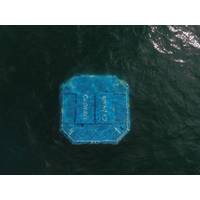
CalWave to Provide Wave Energy Tech for British Columbia Project
make an informed decision on full project buildout.Located on Nootka Island, just off the west coast of Vancouver Island, Yuquot is the traditional home of the MMFN.It was also the site of first contact between European explorers and Indigenous peoples on the west coast of North America, when Captain James Cook moored his ship in Nootka Sound in 1778.The community existed for thousands of years as a center of fish and fur trading until the late-20th century, when almost all residents were forced to relocate to Vancouver Island.Now, the MMFN is working to reclaim their land, rebuild their community, and
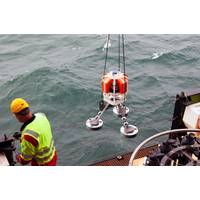
Sonardyne Helps Study Ocean Currents for Climate Insights
, giving the researchers a detailed comparison between the two locations. Deployed for up to 10 years, this will allow them to measure changes in the speed and strength of the AMOC, which will provide crucial data to inform climate predictions.The north-east Atlantic instrument was deployed from the RRS James Cook during the Overturning in the Subpolar North Atlantic Program (OSNAP) research cruise, jointly led by SAMS and the National Oceanography Center (NOC) in August. The western instrument was deployed by SAMS oceanographer Dr Sam Jones during a cruise on board the RV Meteor, led by the German marine
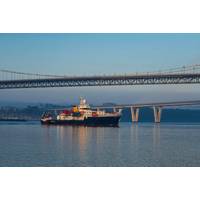
$56m Allocated to Refurbish Three British Research Ships
to explore the world's oceans.Babcock’s International Rosyth shipyard was recently awarded $56 million by the Natural Environment Research Council (NERC), part of UK Research and Innovation (UKRI) to maintain its fleet of scientific research vessels – including the RRS Discovery, RRS James Cook and RRS Sir David Attenborough. RRS Discovery will be the first to undergo a refit at Babcock’s Rosyth facility in Fife, Scotland.During this refit, RRS Discovery will be in drydock to allow the maintenance team access to clean the hull and propulsion equipment, which will help to lower fuel
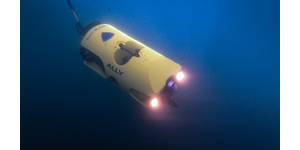
 February 2025
February 2025
